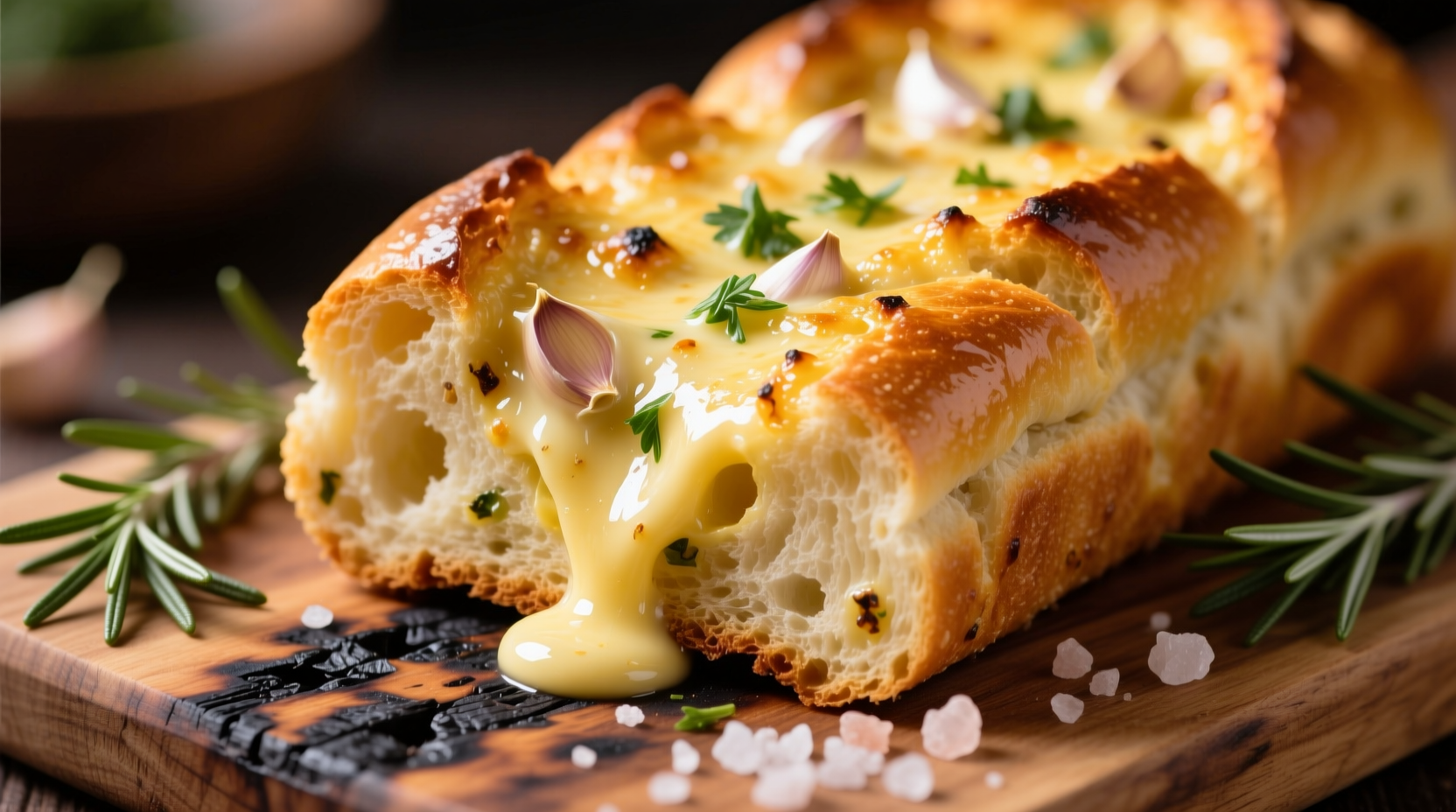Garlic butter bread combines crusty bread, aromatic garlic, and rich butter to create an irresistible side dish that elevates any meal. This guide delivers the perfect recipe with professional techniques, common pitfalls to avoid, and creative variations you'll master in under 30 minutes.
Nothing transforms a simple meal like freshly made garlic butter bread. This beloved side dish features crusty bread infused with garlic-infused butter, creating a fragrant, golden-brown delight that complements pasta, steak, or stands perfectly on its own. Whether you're preparing a weeknight dinner or hosting guests, this versatile recipe delivers restaurant-quality results with minimal effort.
The Essential Garlic Butter Bread Formula
Creating exceptional garlic butter bread starts with understanding the science behind its simple ingredients. Professional chefs know that the magic happens when raw garlic compounds transform during cooking, releasing complex flavors that raw garlic alone can't provide. According to culinary research from the Culinary Institute of America, heating garlic in butter at 300°F (149°C) for 5 minutes optimally develops its flavor compounds without burning.
| Bread Type | Best For | Texture Result | Recommended Soaking Time |
|---|---|---|---|
| Baguette | Classic preparation | Crisp exterior, soft interior | 3-5 minutes |
| Sourdough | Rich flavor profiles | Firm crust, chewy center | 4-6 minutes |
| Ciabatta | Garlic butter dipping | Open crumb, substantial crust | 5-7 minutes |
| Focaccia | Herb-infused variations | Soft, oily texture | 2-4 minutes |
This comparison helps you select the ideal bread base based on your meal context and desired texture. The USDA's Food Safety and Inspection Service recommends using bread with at least 24 hours of aging for optimal moisture control during preparation.
Step-by-Step Preparation Guide
Follow these professional techniques to achieve perfect garlic butter bread every time:
Ingredient Selection Matters
Choose unsalted butter for complete flavor control - you'll add salt precisely where needed. Fresh garlic outperforms pre-minced varieties, containing allicin compounds that create superior flavor when properly prepared. The University of California's Agriculture and Natural Resources department confirms that freshly crushed garlic contains 3-5 times more active flavor compounds than jarred alternatives.
Butter Mixture Perfection
Combine 1 cup softened unsalted butter with 4-5 cloves fresh garlic (minced fine), 2 tablespoons fresh parsley, 1/4 teaspoon salt, and 1/8 teaspoon black pepper. For authentic flavor development, let this mixture rest for 15 minutes before use - this allows the garlic compounds to fully infuse the butter. Professional kitchens often add 1 teaspoon of lemon zest to brighten flavors without making the bread taste citrusy.

Application Technique
Cut your bread on a slight diagonal into 1-inch thick slices, leaving the bottom intact. This creates 'pull-apart' sections while maintaining structural integrity. Using a pastry brush, generously coat each exposed surface with the garlic butter mixture, ensuring coverage reaches all crevices. For maximum flavor penetration, gently separate slices and spread additional butter between layers.
Baking Process
Preheat your oven to 375°F (190°C). Place the prepared bread on a baking sheet and bake for 12-15 minutes until golden brown. For extra crispiness, switch to broil for the final 2 minutes while watching carefully to prevent burning. Remove immediately and sprinkle with fresh parsley before serving.
Avoid These Common Mistakes
Even experienced cooks make these critical errors that compromise garlic butter bread quality:
- Using cold butter - prevents proper spreading and flavor distribution
- Overloading with garlic - creates bitter, overpowering results (4-5 cloves per loaf is ideal)
- Burning the garlic - occurs when butter temperature exceeds 350°F (177°C)
- Slicing too thin - causes bread to become overly crispy rather than achieving the perfect crisp-soft balance
Creative Variations for Every Occasion
Transform your basic garlic butter bread with these chef-approved variations:
Cheesy Garlic Bread
Mix 1/2 cup shredded Parmesan or mozzarella into your butter mixture before baking. For extra indulgence, create cheese pockets by spreading butter on both sides of bread slices and adding cheese between layers.
Herb-Infused Version
Incorporate 1 tablespoon each of fresh rosemary, thyme, and oregano into your butter mixture. Mediterranean culinary traditions often include a pinch of red pepper flakes for subtle heat that complements the garlic perfectly.
Garlic Breadsticks
Roll prepared dough into 1/2-inch thick ropes before baking for perfect dipping consistency. This variation works especially well with ciabatta or baguette dough.
Serving and Storage Guidelines
Garlic butter bread shines brightest when served immediately after baking while the crust remains crisp and the interior stays soft. Pair with tomato-based pasta dishes, grilled meats, or as part of an appetizer spread with olives and cured meats.
For storage, keep leftovers in an airtight container at room temperature for up to 2 days. To restore freshness, reheat in a 350°F (177°C) oven for 5-7 minutes. Avoid refrigeration, which accelerates staling according to research published in the Journal of Food Science.
When Garlic Butter Bread Works Best
Understanding context boundaries helps you serve garlic butter bread appropriately:
- Ideal for: Casual dinners, pasta nights, brunch gatherings, and as an appetizer
- Less suitable for: Formal dining events where bread service follows strict protocols
- Meal pairing limitations: Avoid serving with delicate seafood dishes that might be overwhelmed by strong garlic flavors
- Dietary considerations: Not suitable for dairy-free or garlic-sensitive diets without significant modifications











 浙公网安备
33010002000092号
浙公网安备
33010002000092号 浙B2-20120091-4
浙B2-20120091-4